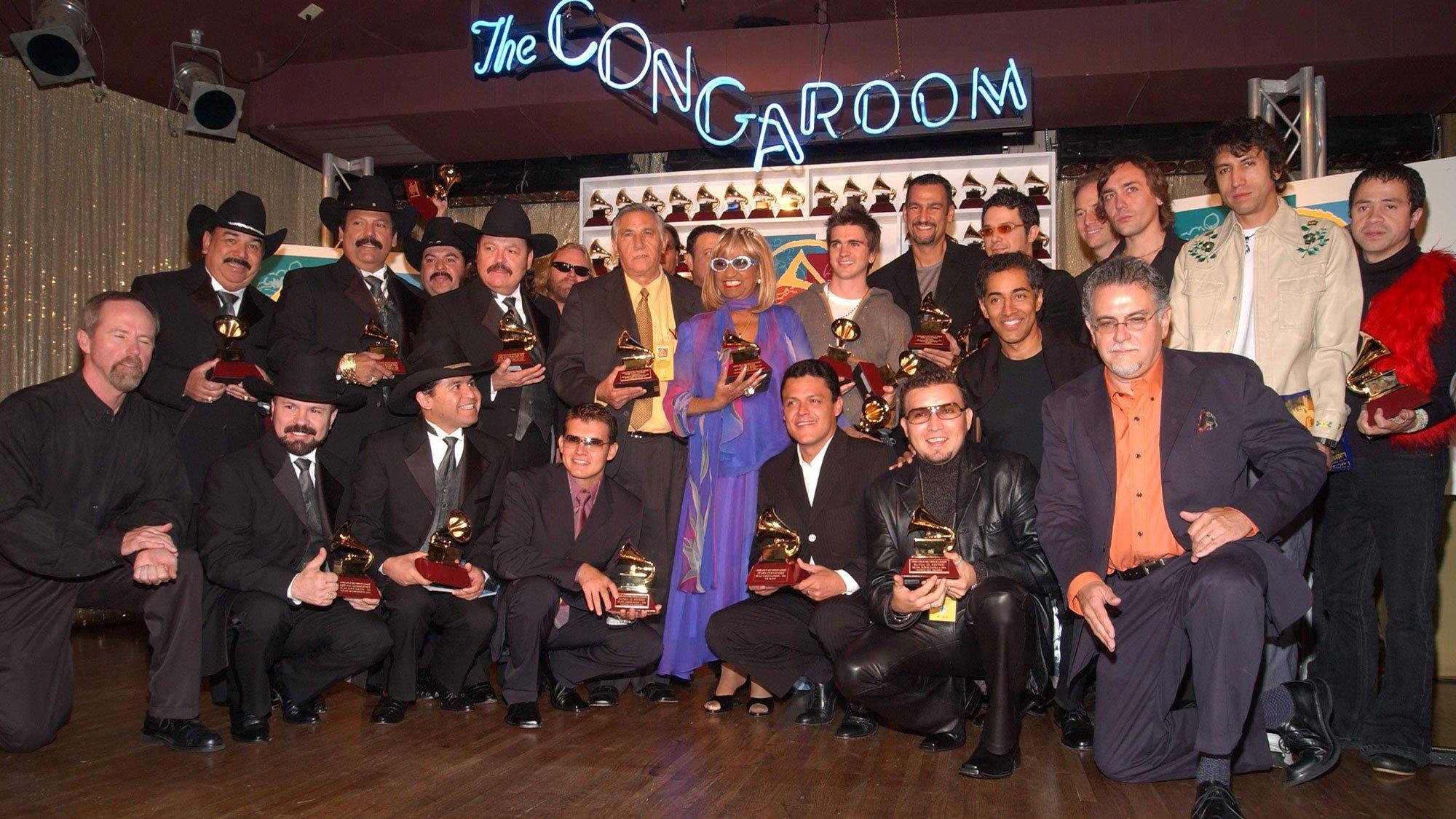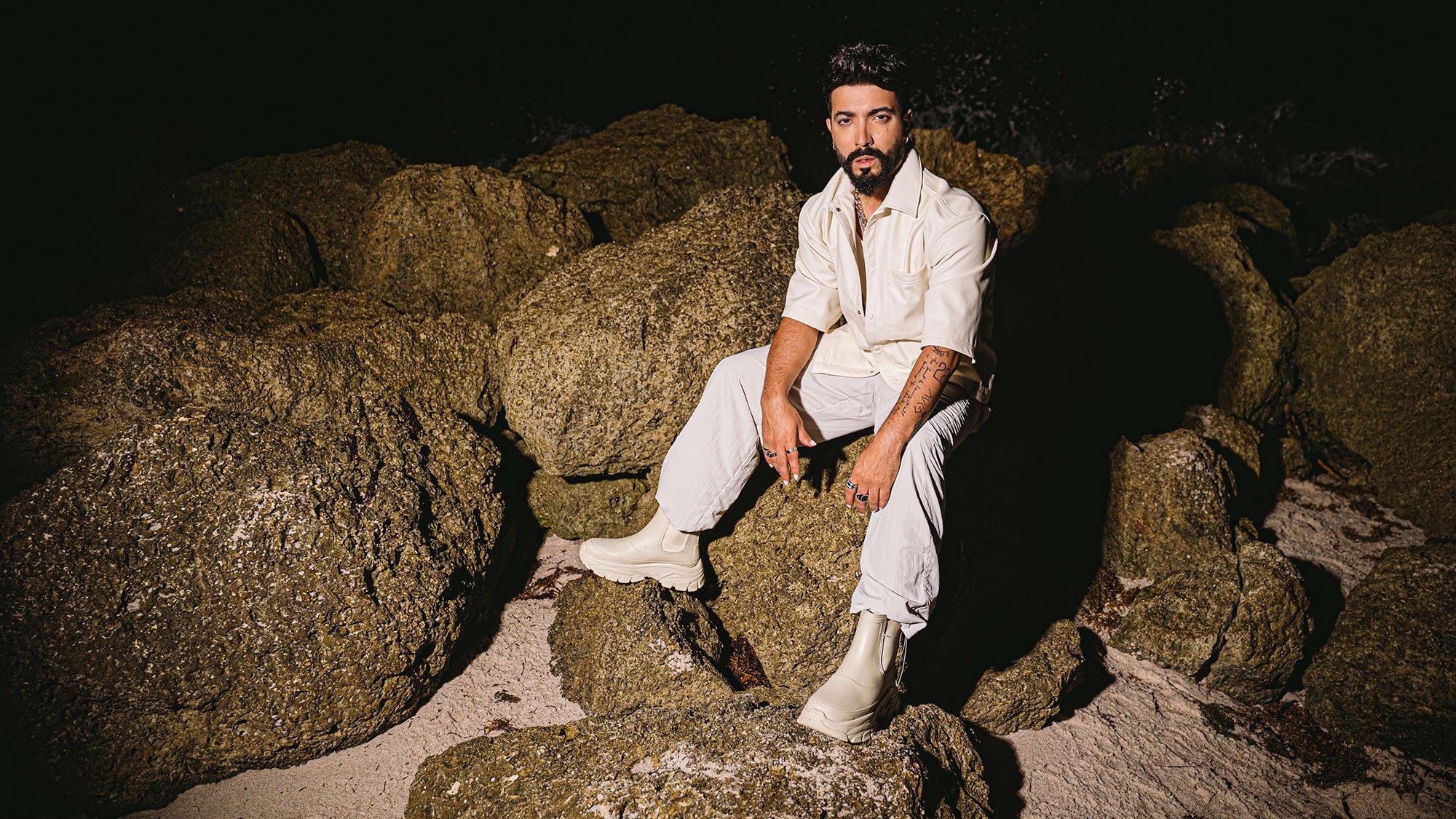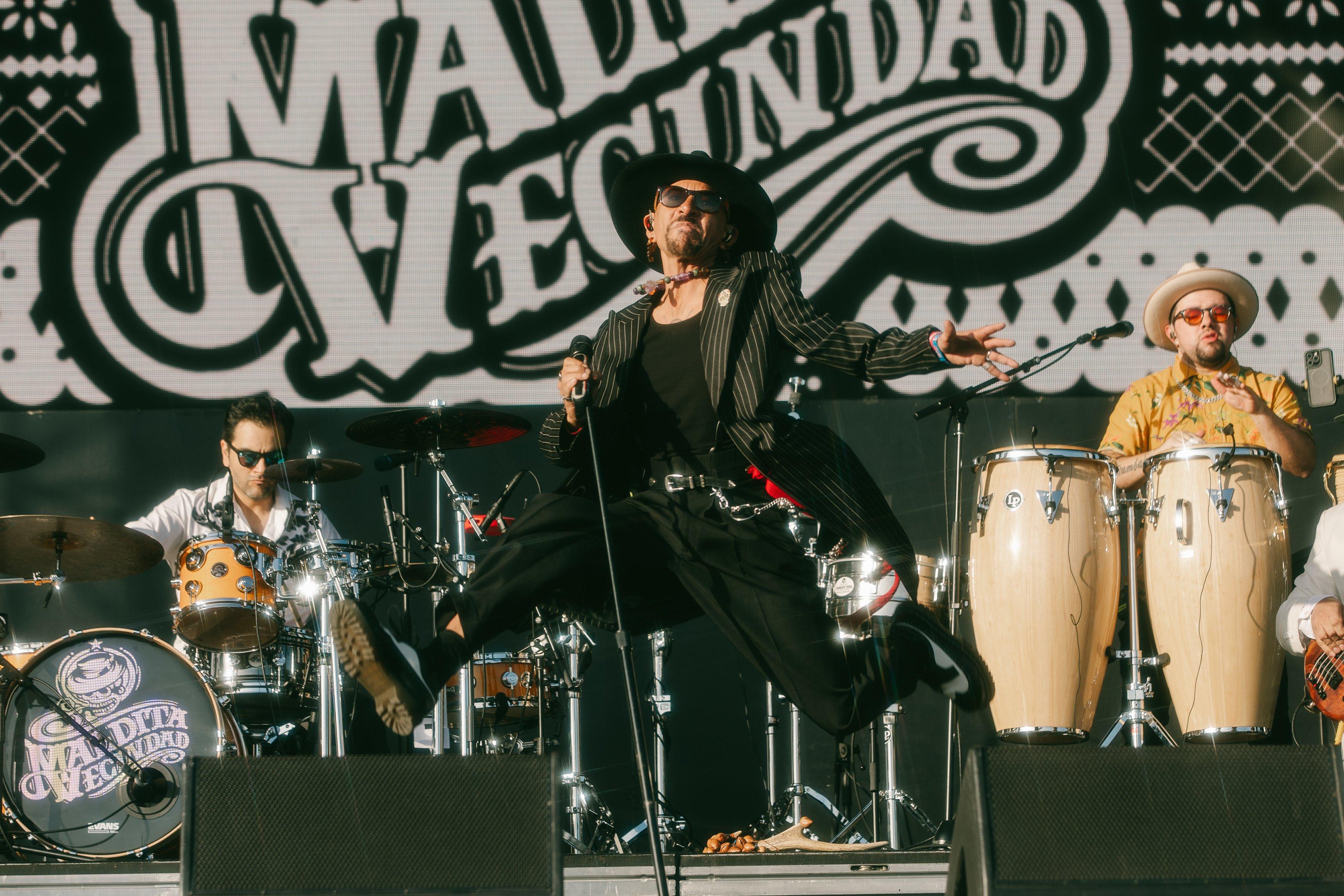Diverse genres within Latin music were celebrated at the Bésame Mucho Festival on Dec. 2 at Dodger Stadium in Los Angeles, where more than 60 acts performed. At the second edition of the festival — which will boast an Austin, Texas edition in March 2024 — artists performed an array of música Mexicana, rock en español, and Latin pop hits to a multi-generational crowd.
Iconic artists and bands performed on four massive stages: The Rockero, Las Clásicas, Te Gusta El Pop? and the Beso stages. Headliners included Cafe Tacvba, Los Bukis and Reik, while major acts such as Bomba Estereo, Los Angeles Azules, and Jesse & Joy added to the fest's wide-ranging sounds.
While a majority of acts were from Mexico, artists from Argentina, Colombia, and Spain were also in the mix. "It was nice to be considered part of such a cool catalog of bands," Luis Humberto Navejas, the lead singer of Latin rock group Enjambre, told GRAMMY.com.
The festival especially highlighted Mexican culture with giant installations of Maria rag dolls and colorful skeletons that are typical of the traditional Day of the Dead holiday.
Read on to learn about what went down during seven standout sets at the Bésame Mucho Festival.
Enjambre Represented The Future Of Latin Rock
Enjambre was one of the first bands to hit the Rockero stage. While most of the Latin rock groups on the line-up predated the 2000s, Enjambre broke through in 2010 with their album Daltónico. Since, the Mexican group have charmed fans in their home country, the U.S. and beyond with their electronica-infused rock.
The band captivated the crowd and had them dancing to their futuristic rock anthems, including "Y La Esperanza," "Divergencia," and "Elemento." With a swagger (and black suit and black pair sunglasses for extra cool) lead singer Luis Humberto Navejas commanded the stage while wielding the microphone stand. Even as the band rocked out, Navejas' otherworldly voice cut through to capture the emotional depth behind each song, especially the nostalgic "Dulce Soledad."
For their latest album Noches De Salón, Enjambre re-recorded their past hits with retro sounds. "We're shedding some light on these old and beautiful rhythms, like the cha-cha, danzón, bolero, and rancheras, that we love so much," Navejas told GRAMMY.com backstage.
Amanda Miguel Ruled the Stage With Her Románticas
One of Mexico's most beloved pop icons is Amanda Miguel, who drew cheers from the crowd as she hit the Te Gusta El Pop? in a bright golden pantsuit. After growing up in Argentina, she became a naturalized citizen of Mexico and later made an impact throughout Latin America and the U.S. thanks to her collection of hit romantic songs.
"It's music that thanks to my fans keeps transcending generations," Miguel told GRAMMY.com backstage. "It's music that's very healing and beautiful. It's music that promotes love, which is what we need the most in the world."
While other acts brought out pyrotechnics and other visual attractions, Miguel relied solely on her powerhouse voice to command the stage. She seamlessly glided between her love songs, such as the sweet "Hagamos Un Trato" and heartbreak anthems like "Dudas." The pain behind "Él Me Mintió" was especially palpable in her emotional performance, though Miguel lightened the mood during the sensual "El Gato y Yo," where she wailed like a rocker.
Paquita La Del Barrio Didn’t Let Illness Slow Her Down
Even before Paquita La Del Barrio hit the Clásicas stage, the crowd was chanting her name. A pioneer for women in música Mexicana, the legend pushed back on machismo ingrained in Latinx culture with her female empowerment anthems.
Paquita La Del Barrio performed her biggest hits while seated, revealing that she was suffering from a throat illness, but that didn't stop her sticking it to the men that wronged her in the classics like "Cheque en Blanco" and "Me Saludas a la Tuya." The crowd went wild when she yelled her famous phrase in Spanish, "Are you listening to me, you good-for-nothing?"
Paquita La Del Barrio brought down the house with her emotional performance of "Rata De Dos Patas," in which she compares a cheating lover to a rat. At the end of her set, she stood up to say, "Since 1947, I’ve received more applause than money and that’s what matters most."
Gloria Trevi Put on an Unforgettable Pop Spectacle
Gloria Trevi is one of Mexico's biggest pop icons and previously ranked as the most successful touring Mexican female artist. The 55-year-oldTrevu left it all on the stage during her larger-than-life pop spectacle and hits-filled set.
Trevi descended down a metal staircase that was uniquely part of her production in a fluffy pink coat. She revealed a white dress underneath that was studded with the colors of Mexico (Trevi's hour-long set included three costume changes). Singing and dancing with a team of male dancers, Tevi flipped around in the arms of her dancers to the glorious "Gloria" and later performed a split while singing "La Papa Sin Catsup." Trevi then crowd surfed while singing a rock-infused version of "Dr. Psiquiatra."
She got the crowd going wild when she belted out her breakthrough hit "Pelo Suelto," concluding her set in a blaze of rainbow lasers with her fierce performance of "Todos Me Miran," an anthem for the LGBTQIA+ community. Trevi's Bésame performance was a preview of next year's Mi Soundtrack World Tour.
Natalia Lafourcade Showed There’s No Limits To Latin Music
Natalia Lafourcade is known for infusing Latin music with elements of jazz, folk and alternative music — a style that has netted the Mexican singer\songwriter three GRAMMY awards and 17 Latin GRAMMYs.
Lafourcade got to prove that her beloved songs are even more breathtaking in a live setting, arriving on the Rockero stage with guitar in hand. While performing a stirring rendition of "María La Curandera," she broke out into a jam session with her band. Lafourcade sang her breezy title track from De Todas Las Flores, which won Record Of The Year at the 2023 Latin GRAMMYs and is nominated for Best Latin Rock or Alternative Album at the 2024 GRAMMYs. Fellow nominees are Leche De Tigre by Diamante Eléctrico, Cabra's MARTÍNEZ, Vida Cotidiana by Juanes and Fito Paez's EADDA9223.
When addressing the crowd, Lafourcade was notably inclusive with using "todes," which is a progressive and gender-neutral way of saying "everybody" in Spanish. She got the crowd dancing when she performed the cumbia version of her hit "Nunca Es Suficiente." Lafourcade drew cheers when she said in Spanish that toxic partners belonged in the trash.
Maná is one of the most-celebrated Mexican acts with four GRAMMY awards and eight Latin GRAMMY awards. After wrapping up a sold-out 16 show residency at the Forum last month, the legendary rock group serenaded Bésame Mucho with its timeless classics.
In his black leather jacket and leather pants, lead singer Fher Olvera and his bandmates ripped through their greatest hits, including "Corazon Espinado" and the funky "Hechicera." The band struck a fine balance between their raucous classics like the unruly "Me Vale" and the heartfelt power ballads like "Mariposa Traicionera" and "Labios Compartidos."
Maná also performed rock-infused covers of "Bésame Mucho" in honor of the festival and "El Rey" by the late ranchera icon Vicente Fernández. The latter was done to pay homage to Fernández and the band's Mexican roots. A full-on dance party erupted in the crowd when Maná performed a fired-up rendition of "Oye Mi Amor."
Pepe Aguilar Serenaded Concert-Goers With His Love Songs
Over the course of his career, Pepe Aguilar has won four GRAMMYs and five Latin GRAMMYs. He proudly represented his country and mariachi music during his hour-long set.
Aguilar appeared on the Clásicas stage in his Mexican charro suit, which is typical of mariachi singers. While performing the sweeping ballad "Directo al Corazón," he removed his giant sombrero to place it over his heart. "After this medley, you'll fall in love with someone," Aguilar promised in Spanish. "Open your heart and let yourself go." Then he continued to touch the hearts of his fans as he belted out his classics like "Perdóname" and "Me Vas A Extrañar."
Aguilar is known for his arena tours that embrace the Mexican tradition of jaripeo, or performances on horseback. While he couldn't bring the full jaripeo experience to Bésame Mucho, vivid images of Mexico and horses appeared behind him as he performed his biggest hits. He closed out his set with a heartfelt rendition of his signature love song "Por Mujeres Como Tú."
8 Latinx Rappers To Know: Eladio Carrion, Young Miko, Akapellah & More




